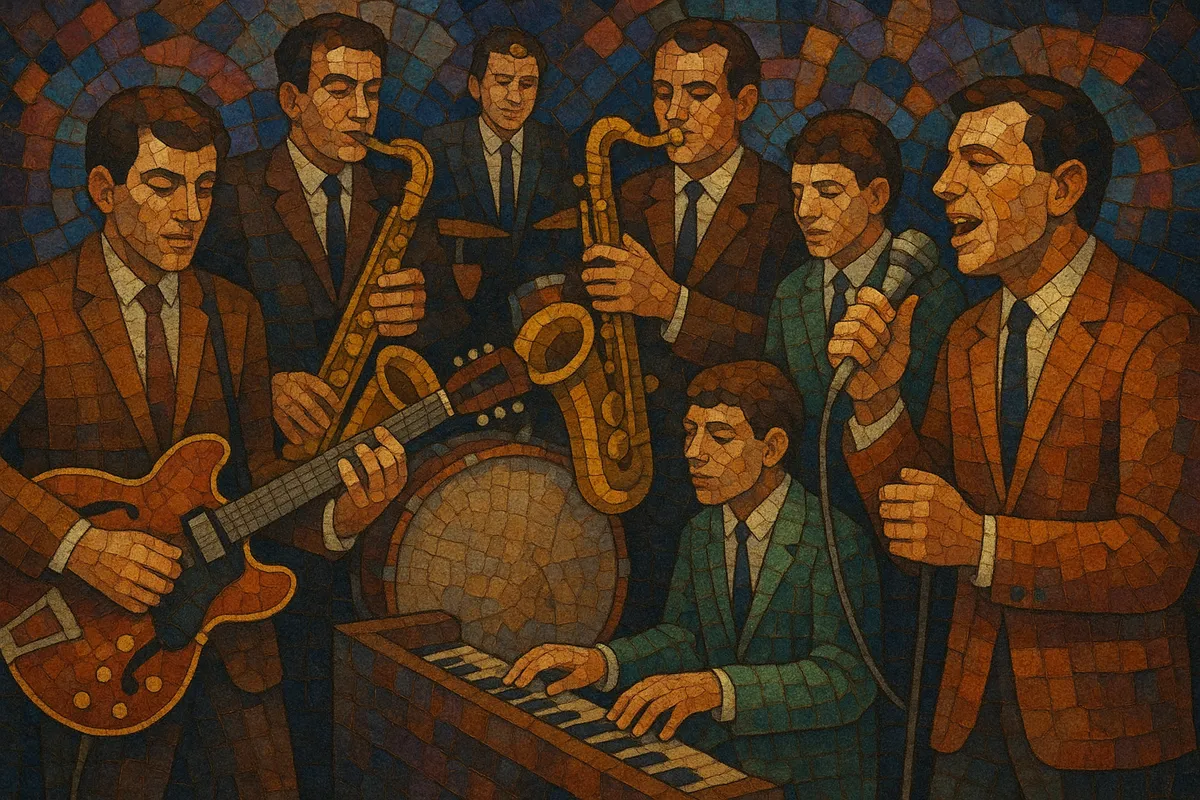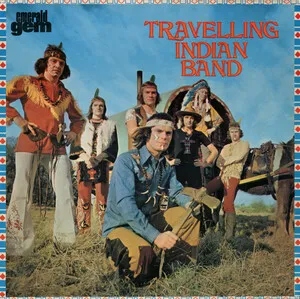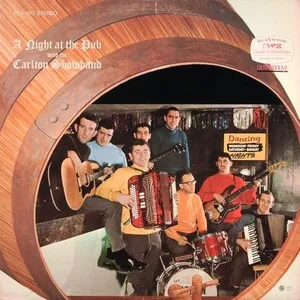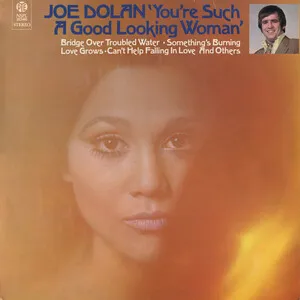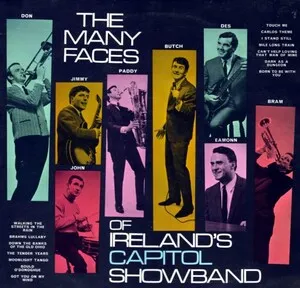Irish showband is a high-energy dance-hall style that flourished in Ireland from the late 1950s through the 1960s, when large touring bands played ballrooms and parish halls most nights of the week.
Typically featuring six to eight musicians with brass, rhythm section, keyboards, and multiple vocalists, showbands delivered tightly arranged cover versions of current hits—rock ’n’ roll, pop, country, rhythm and blues—mixed with waltzes, foxtrots, and the occasional traditional tune. The emphasis was on showmanship, quick medleys, and keeping the floor full.
While not a studio-driven genre, the scene produced charting singles and star vocalists. Its legacy lives on in Ireland’s cabaret and Country & Irish circuits, as well as in the nostalgia attached to the Showband Era.
Post-war Ireland saw a boom in social dancing, and the ballroom circuit created demand for versatile touring bands. Groups like The Clipper Carlton pioneered the “showband” format: brass-forward dance ensembles that could switch from jive and foxtrot to rock ’n’ roll and sentimental ballads in the same set. The model blended big-band showmanship with the new youth sounds arriving from the US and Britain.
By the early 1960s, Irish showbands were a national phenomenon, performing several nights a week and drawing thousands to ballrooms across the island and in the Irish diaspora in Britain. Acts such as The Royal Showband (with Brendan Bowyer), The Miami Showband (with Dickie Rock), The Freshmen, The Dixies, and The Capitol Showband regularly scored Irish chart hits while maintaining relentless live schedules. Repertoires favored current pop, rock ’n’ roll, soul/R&B, and country covers arranged for horns and tight vocal harmonies, often stitched into brisk medleys to keep dancers on the floor.
As discotheques, beat groups, and later the show-driven cabaret scene rose, the classic ballroom showband began to wane. Some musicians modernized their sound; others leaned into country material, helping seed the Country & Irish style. The 1975 Miami Showband massacre amid the Troubles cast a long shadow over the scene’s touring culture. A number of marquee singers moved into solo careers or international residencies (e.g., Las Vegas), while the ballroom infrastructure gradually faded.
Though the showband boom subsided, its impact on Ireland’s live entertainment infrastructure, repertoire versatility, and singer-centered star system has been lasting. It bridged big-band dance tradition with modern pop, directly feeding the Country & Irish circuit and leaving a nostalgic cultural imprint remembered as the “Showband Era.”
Use a 6–8 piece lineup: drums, bass, electric guitar, keyboards, saxophone(s), and often trumpet/trombone, plus one or more lead singers and backing vocals. Aim for clear, dance-friendly amplification with tight horn stabs and unison lines.
Prioritize steady, danceable feels across styles: jive/rock ’n’ roll (up-tempo 140–170 BPM), foxtrot and quickstep (110–140 BPM), waltz (in 3/4, 80–110 BPM), and mid-tempo pop/country shuffles. Drumming should be unfussy and driving; bass lines should lock in with kick for a solid floor pulse.
Arrange covers in concise 2–3 minute formats or link them in medleys. Use bright major keys, close horn voicings, and call-and-response vocals. Add key changes for lift, short horn solos, and concise guitar or sax breaks. Keep intros/outros crisp to facilitate segues.
Curate a set mixing current pop/rock hits, country ballads, and a few standards or traditional numbers. Perform with showmanship: coordinated attire, spoken segues, and crowd interaction. Prioritize singable melodies and strong lead vocals with tight backing harmonies.
Favor clean guitar tones (tremolo or slapback for rock ’n’ roll numbers), warm horn mics, and clear vocal reverb. Rehearse transitions and medleys so the dance floor never empties. The goal is versatility and momentum rather than radical reinterpretation.

